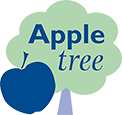What’s Your Newsletter RoI?
The costs involved in setting up and maintaining a newsletter do not have to be high. If you can string a sentence together, know about your subject and have the time to commit to regular writing, you can be the author. If you need someone with writing skills, employ a freelance writer. They can turn your notes or verbal communication into an engaging piece (as long as the rules of good newsletter writing are adhered to). There are a number of newsletter systems in place that you can use to load and distribute the information to your audience, again at relatively low cost.
Once the newsletters are being issued regularly, and you know the cost of them, you need to measure their performance to assess their RoI (as you should with any marketing activity). Now you may think that the main performance indicator is the number of direct sales made as a result of the newsletter, this however is a little crude as a measurement tool. In the B2B market particularly, the chance of converting a sale from a newsletter is relatively slim. There are however a number of other indicators to monitor to assess the performance.
We write, deliver and monitor the performance of our clients’ newsletters. Here are some of the ways you can measure their effectiveness.
Open Rates
Most of our clients achieve an open rate of 40 – 75%. Overall, you should always keep an eye on the open rate stats. Are they changing significantly each month? Gauge the rate against newsletter topic – do some topics increase open rate over others? Chart this stat in a simple spreadsheet, with issue date, topic and number of subscribers. Over time you’ll build a picture of how your newsletter is received, and how your list is growing.
Prospect nurturing and Pipeline building
Are you adding all prospects to your newsletter database? Always ask their permission first; if it’s a genuine prospect and they are interested in what you do they will rarely decline. Newsletters are a perfect way to keep in touch with prospects unobtrusively. When you do call them, ask if they read the newsletter, ask if they found it useful. It’s a great ice-breaker, and often leads to further discussions about how you could work together.
Upsell to existing customers
Do all your customers know about all your products and services? Chances are they don’t. Use the newsletter to share information about a particular service you know they aren’t using, and sell the benefits of it, without being too salesy about it. Use case studies and examples of recent successes; testimonials outlining the work you can do. You’ll be surprised how many people say “I didn’t know you did that”. Selling existing services to existing customers is the easiest sales strategy to follow.
Consider how many people you’ve made aware of these services
Have you extended your blog audience or LinkedIn contacts?
If you use your newsletter as a platform for you other online marketing activity it can have many positive outcomes. Link a related blog to the newsletter each month, giving further tips, advice or industry news. Include a question in your newsletter, having posted it in LinkedIn. Getting people to connect on LinkedIn is another way of engaging with your customers and prospects – all good when it comes to them making that purchase decision as you’re front of mind!
So, on your results spreadsheet, along with the open rates, add comments on results seen in the indicators above. Marketing never is about a certain activity directly creating a sale, it’s much more than that, yet still it can and should be measured.




